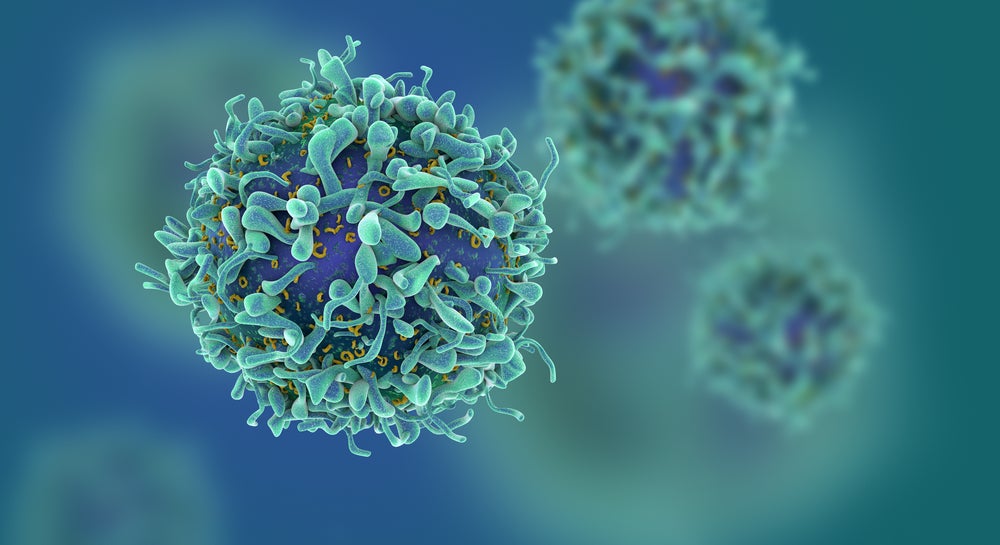
Cancer may not recognise borders, but in Europe your odds of beating it depend on where you live. A woman diagnosed with breast cancer in Sweden has an 86% chance of survival following treatment. But if the same person hops across the Baltic Sea to Lithuania, this figure drops to 66%, according to the European Cancer Patient Coalition (ECPC). Those in Eastern and Central Europe generally have worse cancer outcomes than their Western European neighbours.
“There have always been disparities in cancer care in Europe and we see this across the entire cancer pathway,” reveals Antonella Cardone, director of the ECPC, an umbrella organisation of around 450 cancer patient groups in 46 countries. She says that there is less focus on prevention and screening for cancer in some countries, which means patients are more likely to have their disease diagnosed at a later stage when it is harder to treat.
Two new studies presented at oncology conference ESMO 2020 unpicked another explanation for the inequalities in cancer survival across Europe. Access to cancer medicines is highly unequal across the continent – and this includes both approved drugs and those tested in clinical trials.
The new findings echo a 2018 European Federation of Pharmaceutical Industries and Association report, which found that some patients face long timelines for newly approved drugs to become available in their country. For instance, a patient in Serbia can wait nine times longer than someone in Germany for access to a novel treatment.
Clinical trial choices
Researchers from University Hospital Tübingen (UHT), Germany wanted to see which countries ran the most oncology clinical trials. They searched the Clinicaltrials.gov database for cancer patients between 2009 and 2019 for 34 European countries.
The results were stark. They found that countries in Western Europe ran far more clinical trials for new cancer treatments than those in Eastern and Central Europe. Albania had the lowest number of active cancer trials (with 0.14 trials per 100,000 people). Belgium had the highest, with 11.06 trials per 100,000. These figures suggest some European cancer patients simply don’t have the same opportunities for trying new life-enhancing medicines as others in different countries do.
“Our study gives us proof of what we previously suspected, that there is a huge asymmetry in the number of clinical trials for cancer treatments in different countries,” said study co-author Dr Teresa Amaral at the conference.
Access to clinical trials matters for patients. It means they can potentially take a new therapy to treat the disease years before the drug is officially approved. Trial participants also benefit from additional medical support.
The UHT team found cancer clinical trials are increasing but only in some countries. The number of oncology studies in European countries had increased by 33% between 2010 and 2018. But this was more evident in phase I and II trials. Later-stage trials only increased by 7% in this time.
“A higher number of phase I trials is a sign of more active research going on in a particular country, with the appropriate infrastructure and necessary incentives to conduct clinical trials,” said Thomas Cerny, professor of medical oncology at the University of Berne, Switzerland at the conference.
“The difference in the number of clinical trials per head of population, with more trials in wealthier countries, means access to clinical trials and innovative drugs is just not possible for cancer patients living in many less wealthy countries.”
Money matters
To conduct clinical trials, you need significant resources and solid infrastructure, which depend on a country’s overall financial situation. Another piece of research presented at ESMO 2020 found that wealthier European countries spend ten times as much on cancer medicines per person as poorer countries in the continent do.
“We found that inequalities are mainly related to a country’s economic strength, and not to the disease burden of cancer,” said lead author Dr Nils Wilking, from the Karolinska Institutet Stockholm, Sweden. “There are two main factors accounting for the differences in spending on cancer medicines: one is shortage of money and the other is drugs not being approved for use by some healthcare systems.”
Looking at 2018 health expenditure figures for 31 European countries, the researchers soon discovered who were the top spenders for cancer medicines. Austria, Germany and Switzerland were the front-runners. The lowest spenders were the Czech Republic, Latvia and Poland.
The biggest difference in spending was on immunotherapy drugs. These new medicines are some of the most promising in the cancer treatment arsenal. They work by stimulating the body’s immune system to recognise and fight back against the cancer cells. The research suggests many patients who could benefit from this type of treatment can’t access it.
Solving health inequalities is never easy. Ensuring more European patients can try innovative cancer drugs will likely take a multi-pronged approach. One bottleneck in getting newly approved treatments to patients is the process each country has for evaluating a drug’s cost-effectiveness.
This health technology assessment (HTA) can vary widely in different regions. Cardone thinks a harmonised HTA across the continent (which was proposed by the European Commission in 2018) could mean more patients get access to life-preserving and life-enhancing therapies.
As for clinical trials, one potential solution would be developing new laws to allow cross-border participants in studies. Public education campaigns could help too, so more people are aware of the benefits of taking part in clinical research. Making clinical trial search engines that are available in multiple languages and use terms the general public can understand might also make a difference.
Regulators, governments, patient organisations and the pharmaceutical industry will need to work together to close the cancer survival gap in Europe, says Cardone. But shining a spotlight on the problem, as these two studies have done, could help propel change.



